Depending on your interests, there are so many different types of gardens you can keep. You can grow a vegetable garden, a pollinator garden or a cut flower garden. But if you love crafting and creating bouquets with dried flowers specifically, why not grow a dedicated dried flower garden?
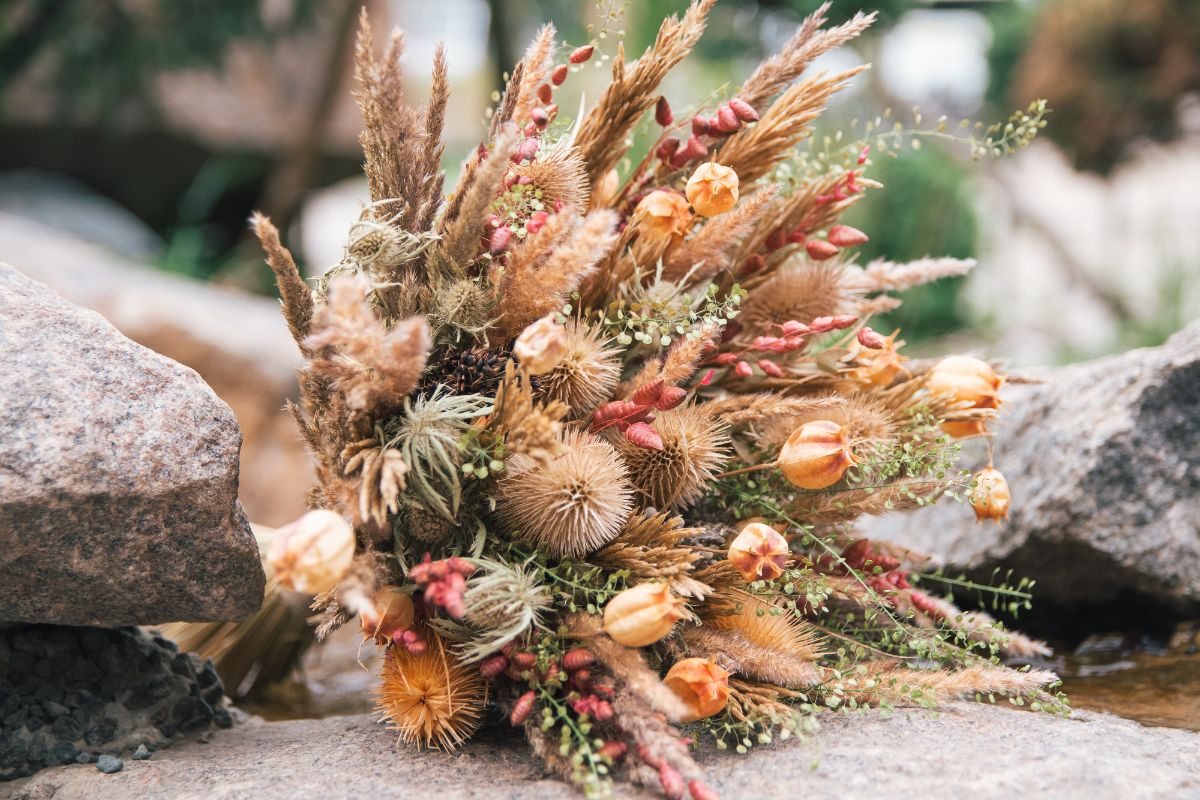
Certain plants lend themselves well to drying, making them perfect crafting elements. We’ve created this guide for anyone who loves working with dried flowers. Below are our top picks for easy to grow plants that dry well and look stunning in preserved bouquets.
Whether you’re new to flower arranging or a seasoned florist, we think you’ll find the perfect plant for you on this list. Fresh or dried, these pretty blooms come in different shapes and colors and, once dried, they make lovely bouquets to bring your garden indoors during the winter months too!
Jump to:
- Best flowers to grow for dried bouquets
- 1. Amaranth (Amaranthus spp.)
- 2. Globe thistle (Echinops spp.)
- 3. Celosia (Celosia spp.)
- 4. Hydrangea (Hydrangea spp.)
- 5. Yarrow (Achillea millefolium)
- 6. Strawflowers (Xerochrysum bracteatum)
- 7. Lavender (Lavandula spp.)
- 8. Rose (Rosa spp.)
- 9. Tansy (Tanacetum vulgare)
- 10. Baby’s breath (Gypsophila spp.)
- 11. Poppy (Papaver spp.)
- 12. Statice (Limoniumsinuatum)
- 13. Bachelor buttons (Centaurea cyanus)
- 14. Goldenrod (Solidago spp.)
- 15. Broomcorn (Sorghum bicolor)
- 16. Craspedia (Craspedia spp.)
- 17. Scabiosa (Scabiosa spp.)
- 18. Sea holly (Eryngium spp.)
- Frequently asked questions
- Summary
Best flowers to grow for dried bouquets
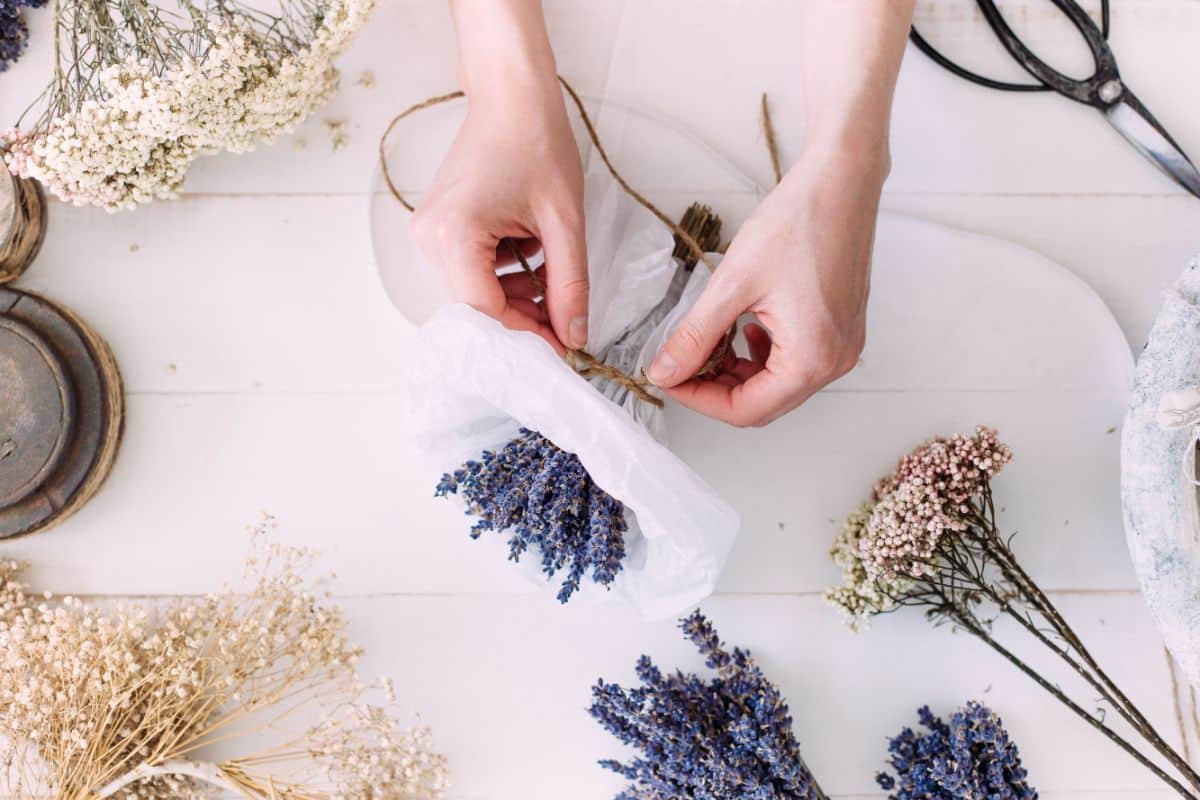
Many flowers can be dried for floral arrangements. But the best flowers for the job are specimens that dry easily with minimal effort and retain their color and shape. With these features in mind, here are our top picks for the best flowers to grow for dried arrangements and other crafting.
1. Amaranth (Amaranthus spp.)
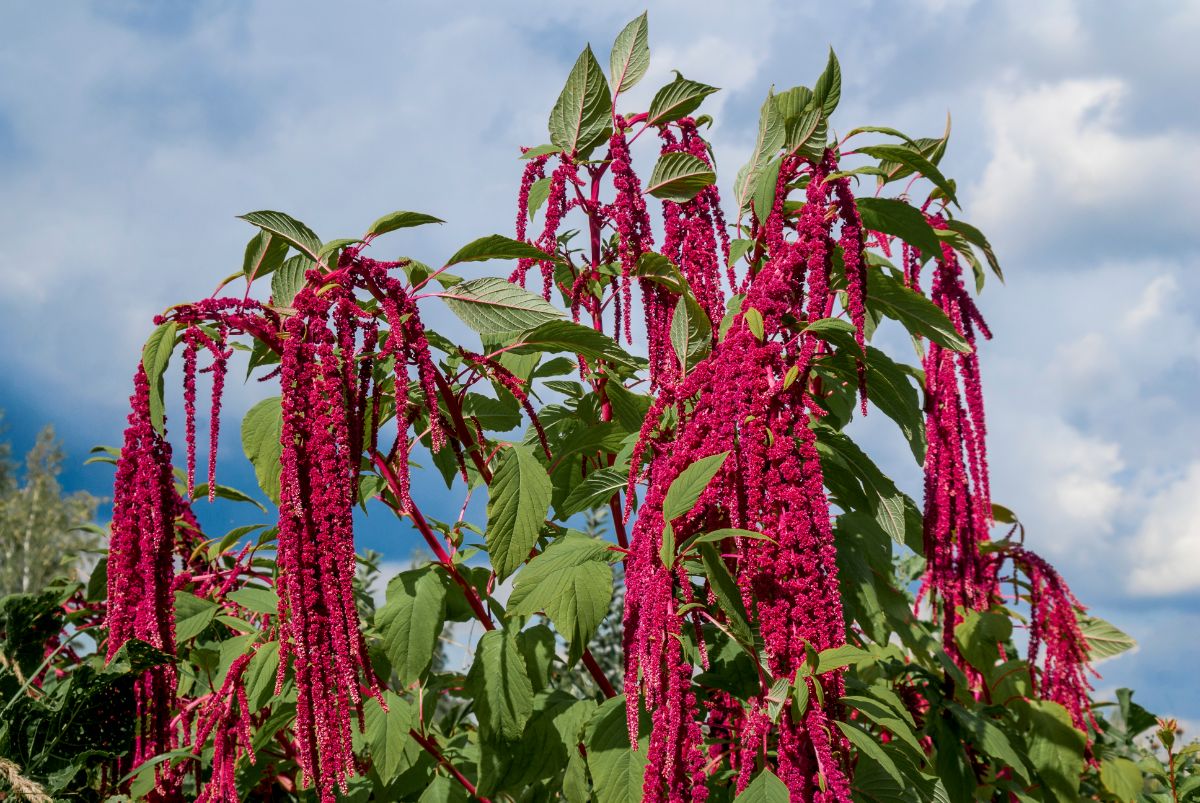
| Plant name: | Amaranth |
| Lighting: | Full sun |
| Watering requirements: | Moderate to low |
| Annual or perennial? | Annual |
| Bloom time: | Mid-summer to frost |
Amaranth is a showstopping plant that has a big presence in the garden. Sometimes grown as an edible crop, amaranth creates a lot of seeds, which are a favorite treat for visiting birds.
There are many fun varieties of amaranth to try in the garden, including:
- Red amaranth, with vibrant red leaves and flowers
- Globe amaranth, with sweet globular blooms
- Love-lies-bleeding, with beautifully draping flower heads
An easy going plant, amaranth is relatively drought-tolerant once established and grows quite large too for lots of visual impact. And it makes a perfect addition to wreathes and dried bouquets!
2. Globe thistle (Echinops spp.)
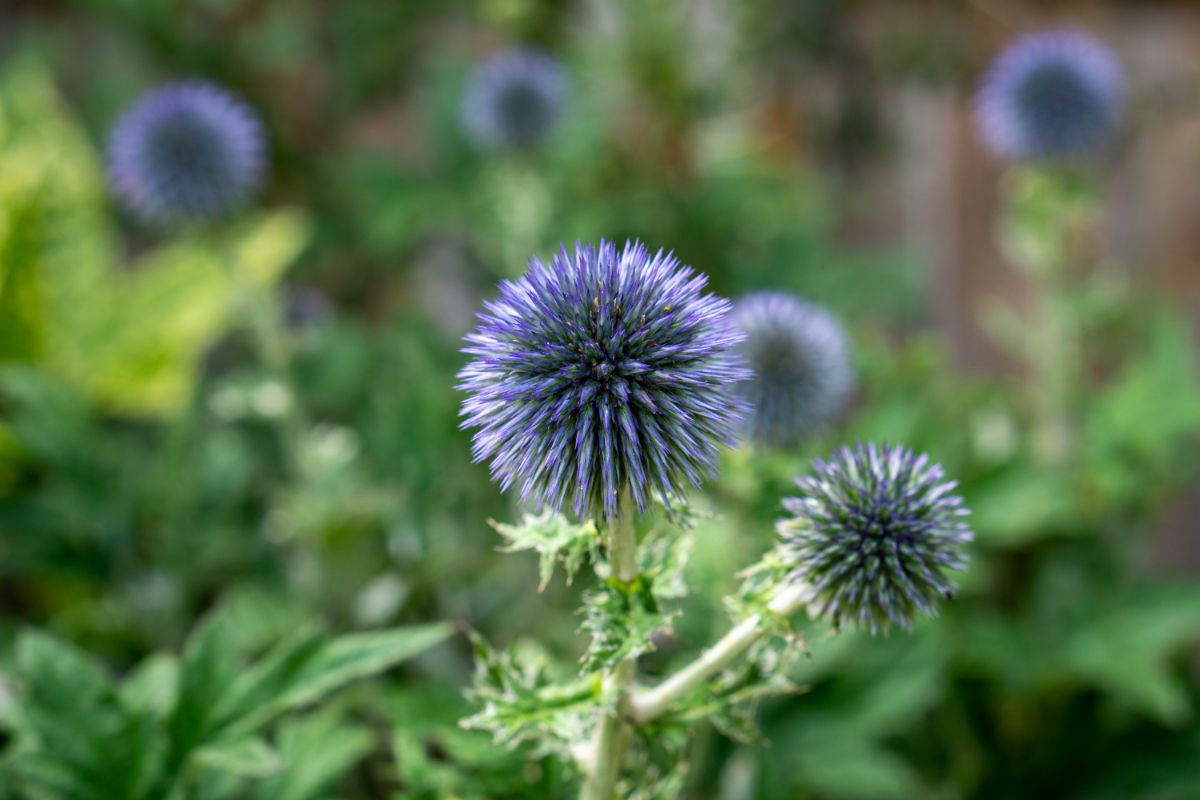
| Plant name: | Globe thistle |
| Lighting: | Full sun |
| Watering requirements: | Low |
| Annual or perennial? | Perennial |
| Bloom time: | Summer |
A member of the Aster family, globe thistle is naturally found in Europe, Asia and Africa, but it’s easy to grow in your backyard too.
A drought-tolerant plant, globe thistles sport spiky foliage and globe-shaped flowers in blue and white. The unique shape makes them a favorite among florists and for crafting dried bouquets.
3. Celosia (Celosia spp.)

| Plant name: | Celosia |
| Lighting: | Full sun |
| Watering requirements: | Moderate |
| Annual or perennial? | Annual |
| Bloom time: | June to frost |
Easy to grow, celosia are common sights at garden centers, but they grow quickly when started from seeds too. Bright blooms come in pinks, oranges and reds, and can be found in a variety of shapes, including:
- Crested cockscomb celosia
- Plume celosia
- Wheat celosia
Ideal as a filler flower, celosia’s large blooms make them excellent focal points for flower arranging too. What’s more, they dry easily and retain their shapes nicely over time.
4. Hydrangea (Hydrangea spp.)
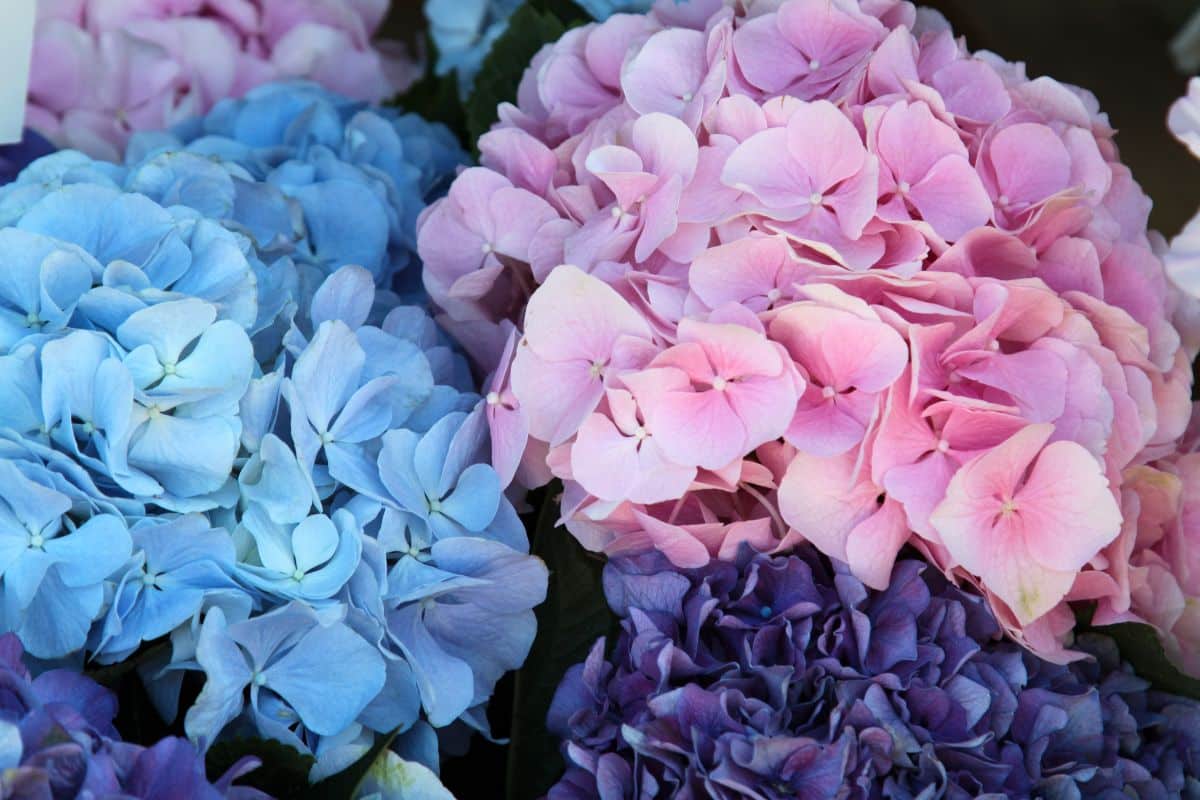
| Plant name: | Hydrangea |
| Lighting: | Bright, indirect sun; full sun may cause them to temporarily wilt during the heat of the day |
| Watering requirements: | Moderate |
| Annual or perennial? | Perennial |
| Bloom time: | Spring through fall |
Hydrangeas are shrubs, so they’re not well-suited to very small gardens. However, there are a number of different hydrangea varieties to try, including climbing hydrangeas, which can be trained to grow in smaller yards.
Some hydrangea types, like bigleaf hydrangeas, are well known for their ability to change color depending upon the pH of the soil. So for a different look, try adding lime or sulfur around hydrangea bases and watch as the flowers change from pink to blue, or vice versa.
Simple to dry, hydrangeas can be preserved by just placing them in a vase without water. Their large flower heads are sure to be the stars of any dried bouquet you create.
5. Yarrow (Achillea millefolium)
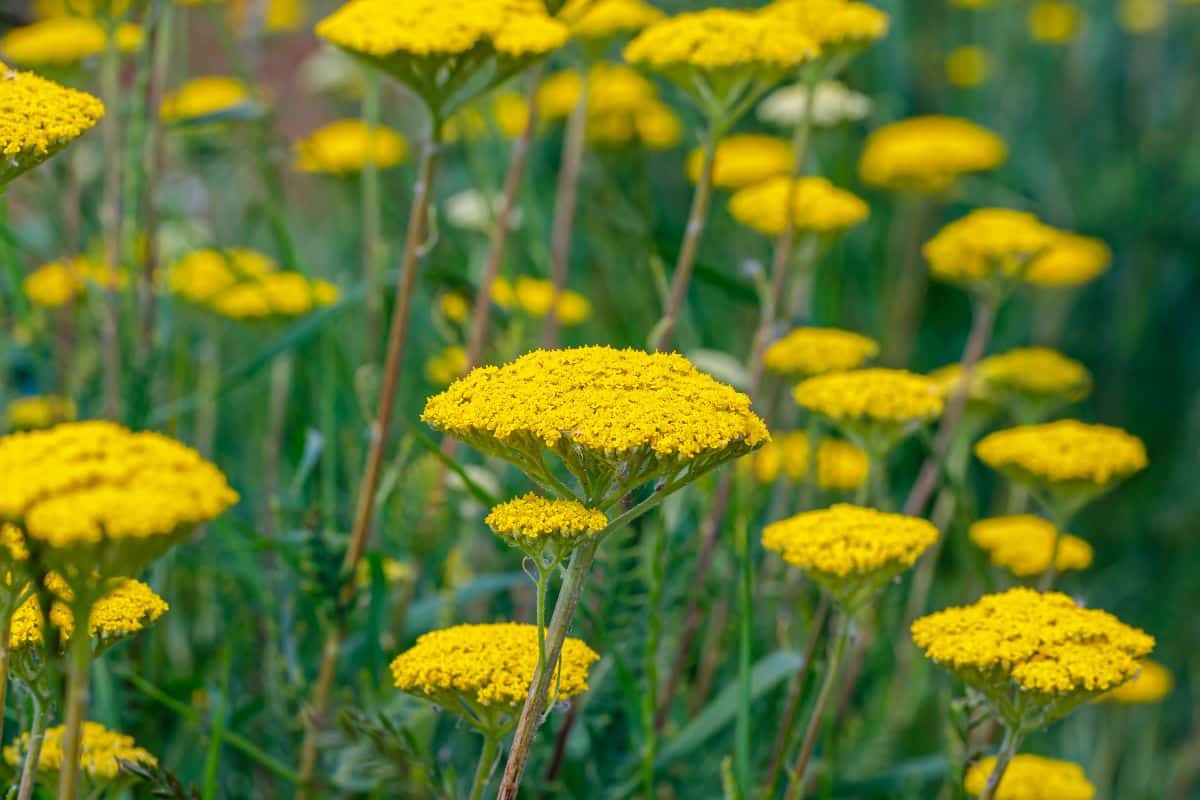
| Plant name: | Yarrow |
| Lighting: | Full sun |
| Watering requirements: | Low |
| Annual or perennial? | Perennial |
| Bloom time: | Early spring to late fall |
A truly versatile plant, yarrow is perfect for ornamental beds, pollinator gardens, cut flower gardens and dried arrangements too.
Large, flat flowers are actually comprised of many smaller blooms and come in white, yellow and pink. Both flowers and the plant’s feathery foliage dry well and work nicely as fillers or focal points in dried arrangements.
Yarrow looks particularly stunning on homemade wreaths and can even make a super cute accent when tied into gift bows!
6. Strawflowers (Xerochrysum bracteatum)
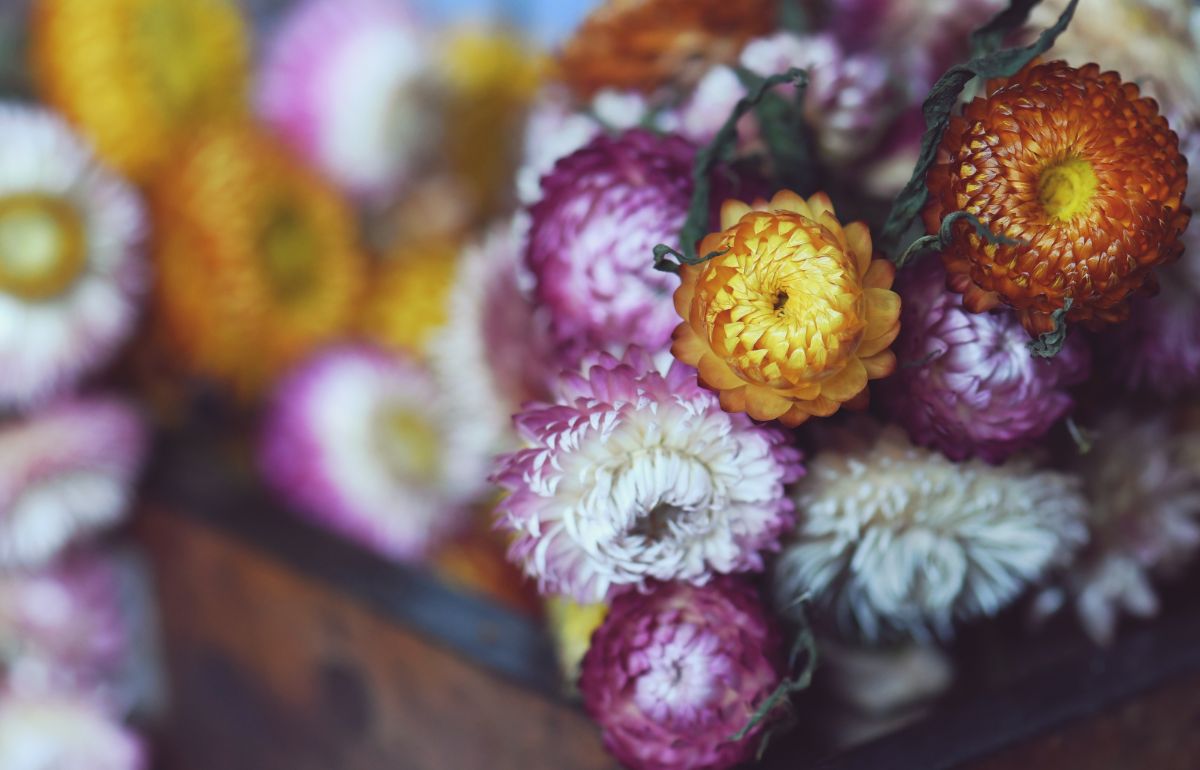
| Plant name: | Strawflowers |
| Lighting: | Full sun to part shade |
| Watering requirements: | Moderate |
| Annual or perennial? | Annual |
| Bloom time: | Summer to frost |
Strawflowers have colorful, daisy-like blooms in pinks, yellows, oranges, reds and white, which retain their vibrancy well even after drying.
A long blooming annual plant, this Australian native is ideal for dried bouquets. Flowers are also sturdy enough to snip off from their stems and use in other crafting projects, such as gluing them to picture frames or using them to decorate ornamental boxes.
7. Lavender (Lavandula spp.)
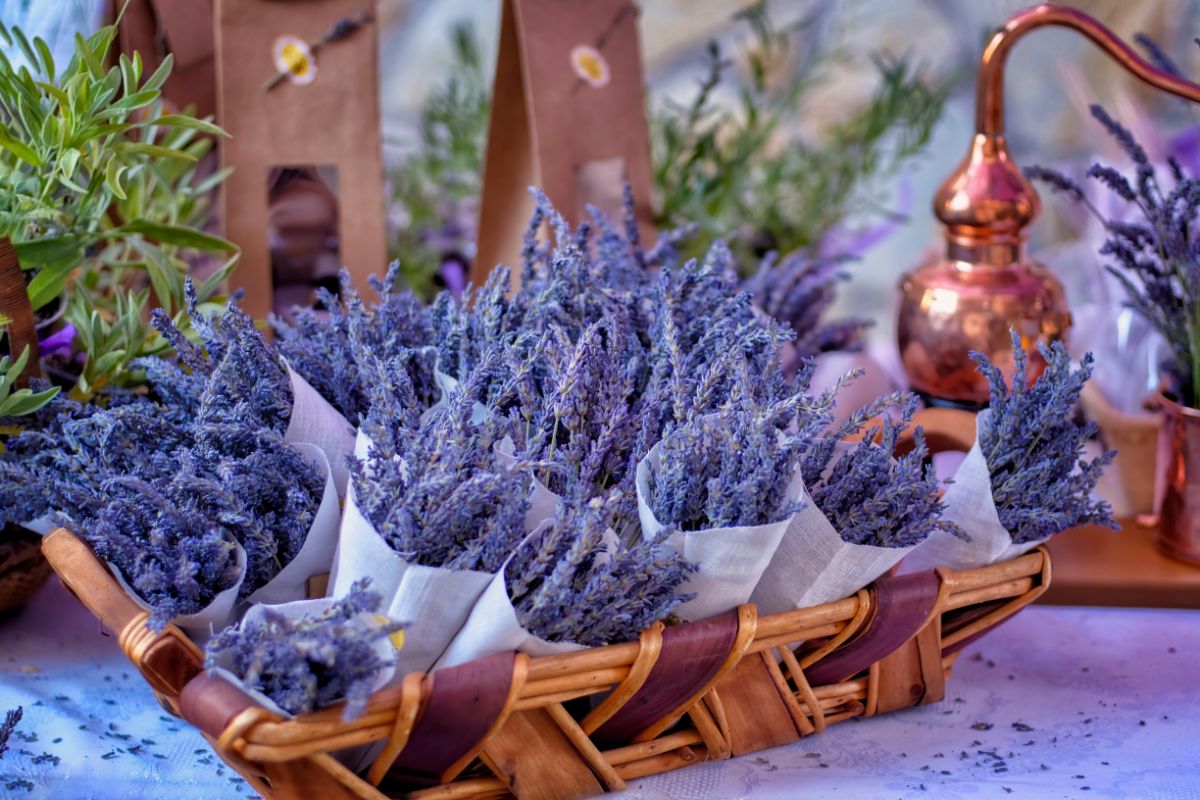
| Plant name: | Lavender |
| Lighting: | Full sun |
| Watering requirements: | Low |
| Annual or perennial? | Perennial |
| Bloom time: | Spring through summer, depending on the variety |
Wonderfully fragrant, lavender has so many uses. It’s a pretty ornamental, a pollinator favorite and some types are even edible and make flavorful additions to desserts and homemade syrups. But if you’re a crafter, lavender is one of the must-have plants in your garden.
Lavender naturally thrives in drier soils, so it dries out quickly for preserving. Once dried, lavender flowers can be kept on their stems for lavender bouquets or mixed flower arrangements. Alternatively, lavender flowers can be removed from their stems to be used in other craft projects, like eye pillows and sachets.
8. Rose (Rosa spp.)
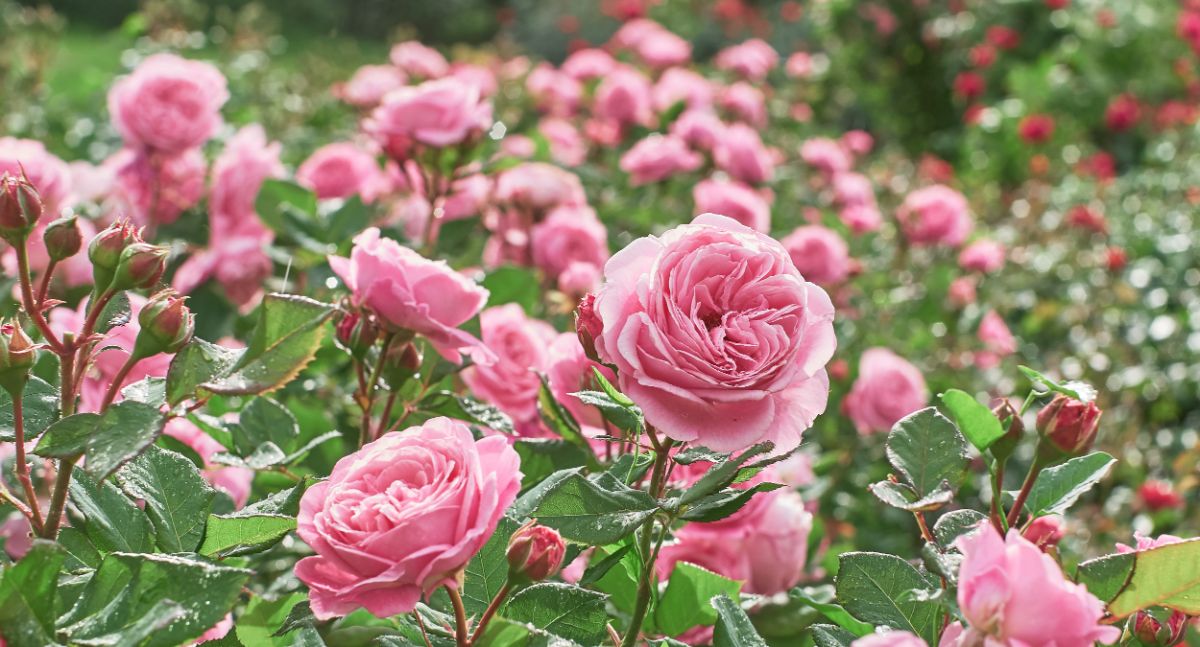
| Plant name: | Rose |
| Lighting: | Full sun |
| Watering requirements: | Moderate |
| Annual or perennial? | Perennial |
| Bloom time: | Spring through fall |
If you’ve ever received a bouquet of roses, you know that they dry out beautifully with minimal effort. Once dried, rose flowers stay quite firmly attached to their stems and often retain a good deal of their fragrance for more sensory delights.
While there are many different rose types available, some of the best cultivars for dried arrangements are those varieties with tightly formed blooms. These roses are less likely to drop petals after drying.
Additionally, as roses come in lots of different colors, try planting a few different types for more varied dried arrangements.
9. Tansy (Tanacetum vulgare)
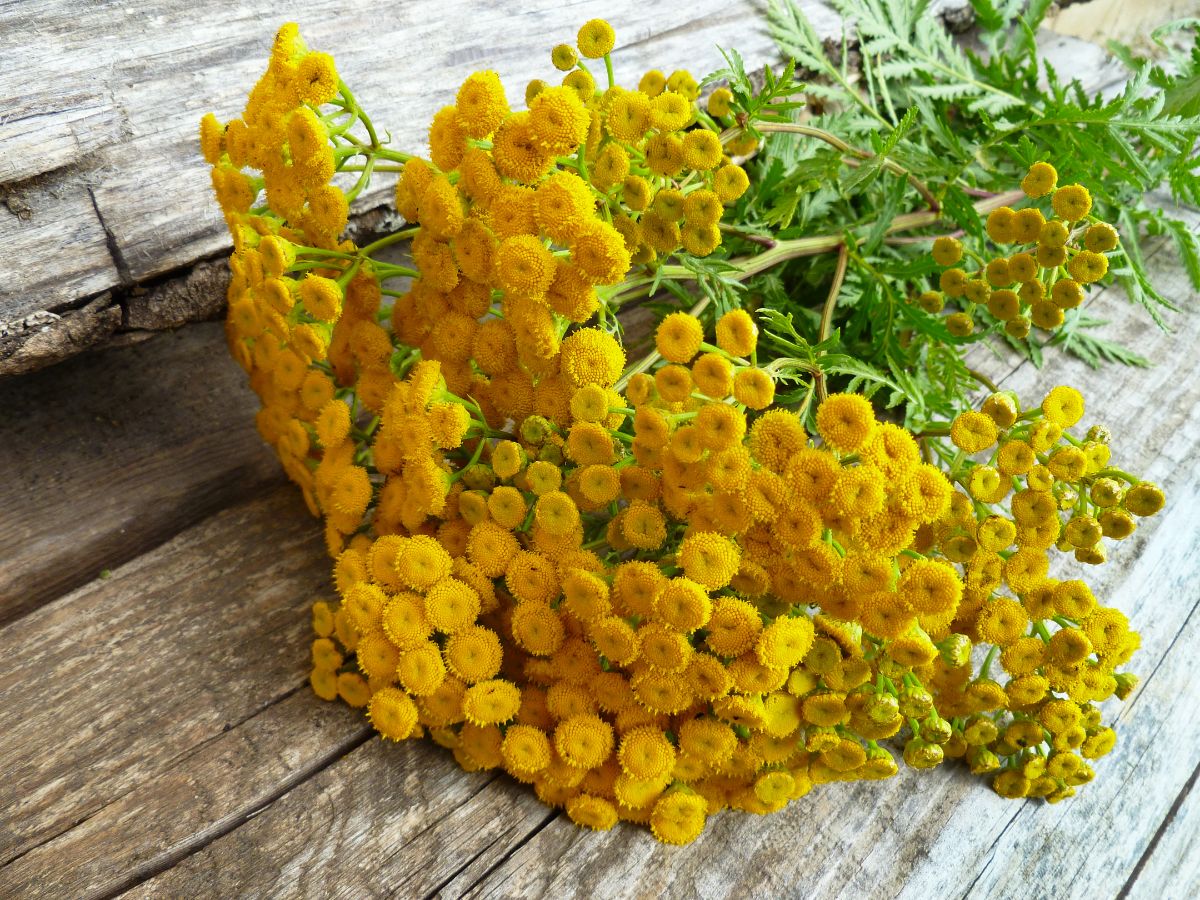
| Plant name: | Tansy |
| Lighting: | Full sun to part shade |
| Watering requirements: | Low |
| Annual or perennial? | Perennial |
| Bloom time: | July to September |
A staple in medicinal gardens, tansy is a pollinator-friendly plant that bees love. But it remains very attractive after drying too.
Bright yellow, button-shaped flowers appear at the end of long stalks, which work for longer stemmed bouquets. Stems can be shortened significantly too for other craft projects, like homemade wreaths and garlands. The feathery leaves work well as bouquet fillers too!
10. Baby’s breath (Gypsophila spp.)
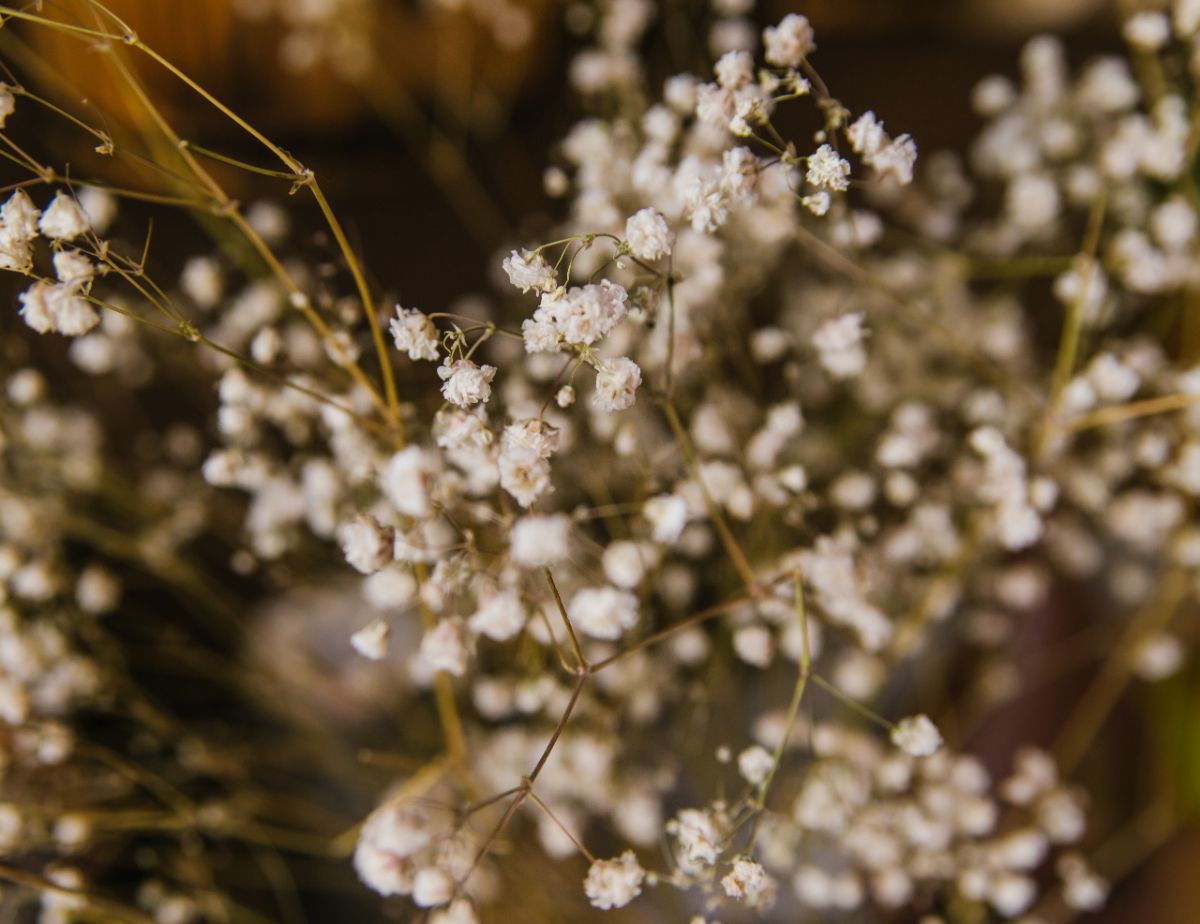
| Plant name: | Baby’s breath |
| Lighting: | Full sun |
| Watering requirements: | Low |
| Annual or perennial? | Depends on variety |
| Bloom time: | Late spring through summer |
One of the best filler flowers around, baby’s breath is a common sight in both fresh and dried bouquets. Flowers are usually white, but if you want more color, some varieties come in pale yellow and pink too.
Small, white flowers appear at the ends of long, slender stems and lend grace and a feeling of airiness to arrangements. For best results, collect flowers in midday to ensure all the blooms have opened.
11. Poppy (Papaver spp.)
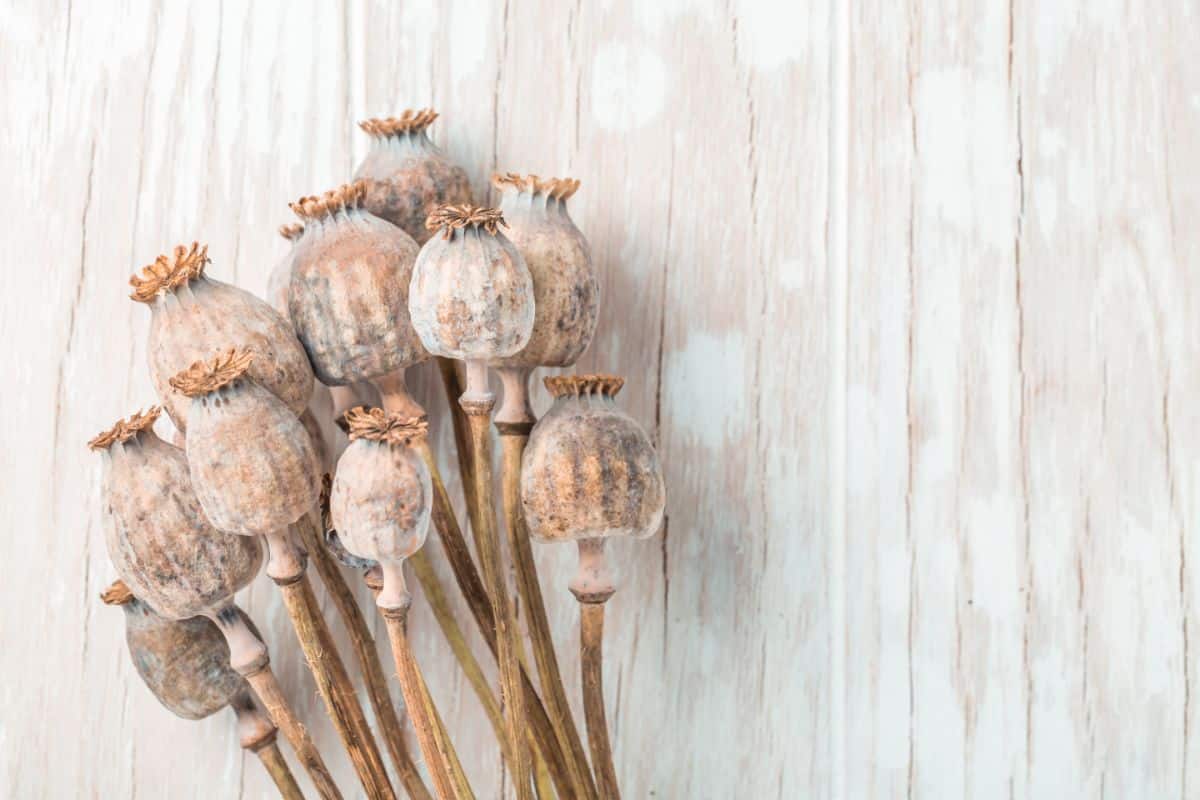
| Plant name: | Poppy |
| Lighting: | Full sun |
| Watering requirements: | Moderate |
| Annual or perennial? | Depends on variety |
| Bloom time: | April to June |
Poppies are the flowers of remembrance and can lend a thoughtful symbolism to preserved displays. While they are quite colorful flowers in the garden, with petals appearing in red, pink and other colors, as a dried specimen they are kept solely for their dried pods.
Poppy pods are formed from a large central pod (or “hen”), which is surrounded by smaller pods (or “chicks”). These pods are full of tiny, round poppy seeds that are easy to hand sow around your garden to keep your poppy patch going.
After harvesting, poppy pods usually maintain a bluish-green cast, but once fully dry pods turn brown. An excellent choice for adding texture and sharp lines to your floral displays!
12. Statice (Limoniumsinuatum)
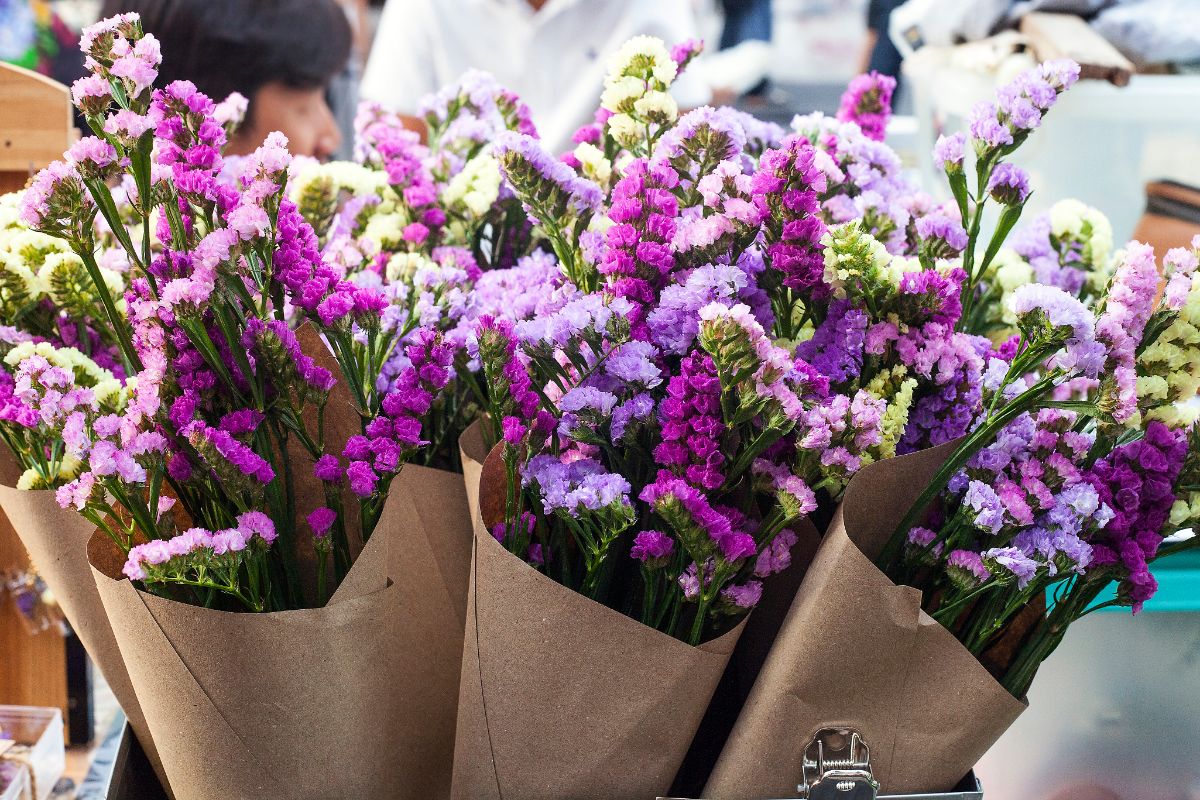
| Plant name: | Statice |
| Lighting: | Full sun |
| Watering requirements: | Low |
| Annual or perennial? | Annual or short-lived perennial |
| Bloom time: | Early summer to late fall |
One of the best filler flowers, statice is frequently used in both fresh and dried arrangements. Papery flowers dry easily and keep their colors well, which is good to know because these showy plants are quite vibrant with blooms coming in purple, white, yellow and pink.
Drought-tolerant and easy to grow, harvest statice flowers on a dry day when most of the blooms are mature and open and the colors have developed fully.
13. Bachelor buttons (Centaurea cyanus)
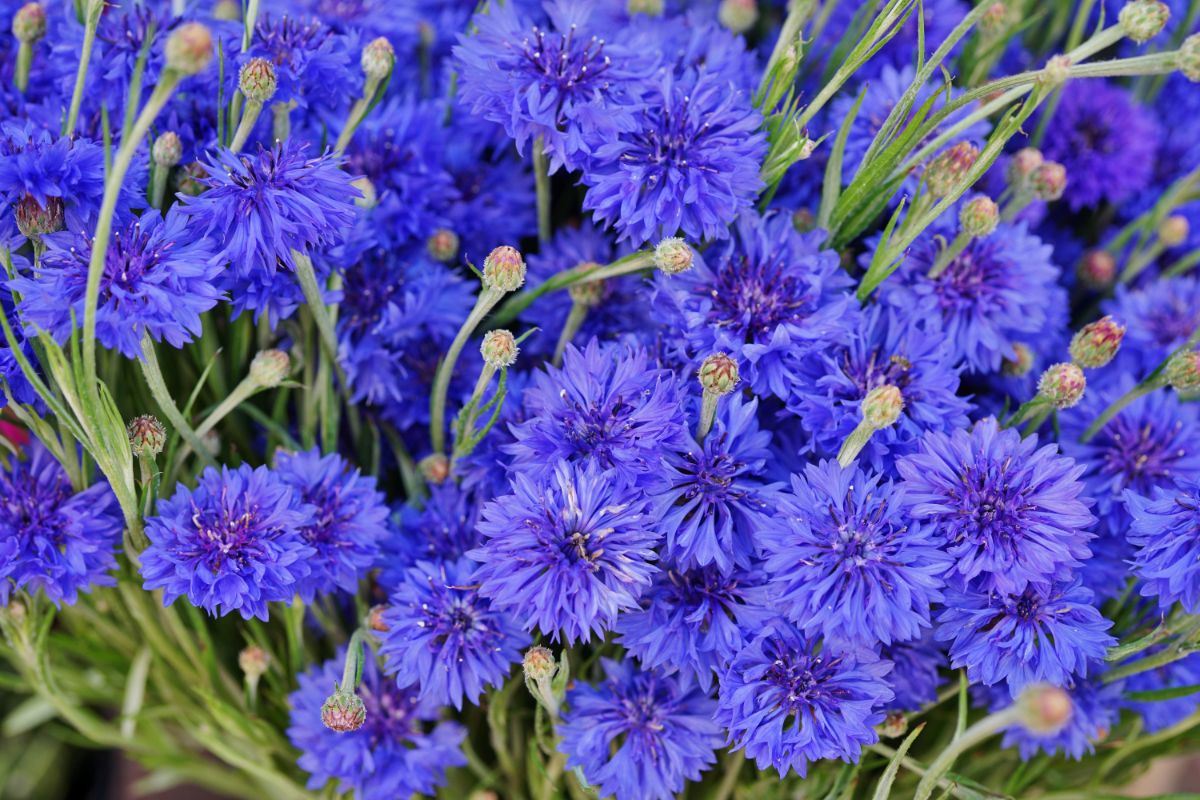
| Plant name: | Bachelor buttons |
| Lighting: | Full sun to part shade |
| Watering requirements: | Moderate to low |
| Annual or perennial? | Annual |
| Bloom time: | Late June through August |
Also known as cornflowers, bachelor buttons are versatile plants. They are great companion plants, they’re pollinator-friendly and they’re even edible! They also are the perfect plant to keep if you’re looking to add tons of colors to dried or fresh bouquets.
Button-shaped flowers are most commonly sighted in the famous “cornflower” blue coloring, but they come in white and pink too. Hang drying works well for these plants and colors stay sharp, making them attractive additions for craft projects.
14. Goldenrod (Solidago spp.)
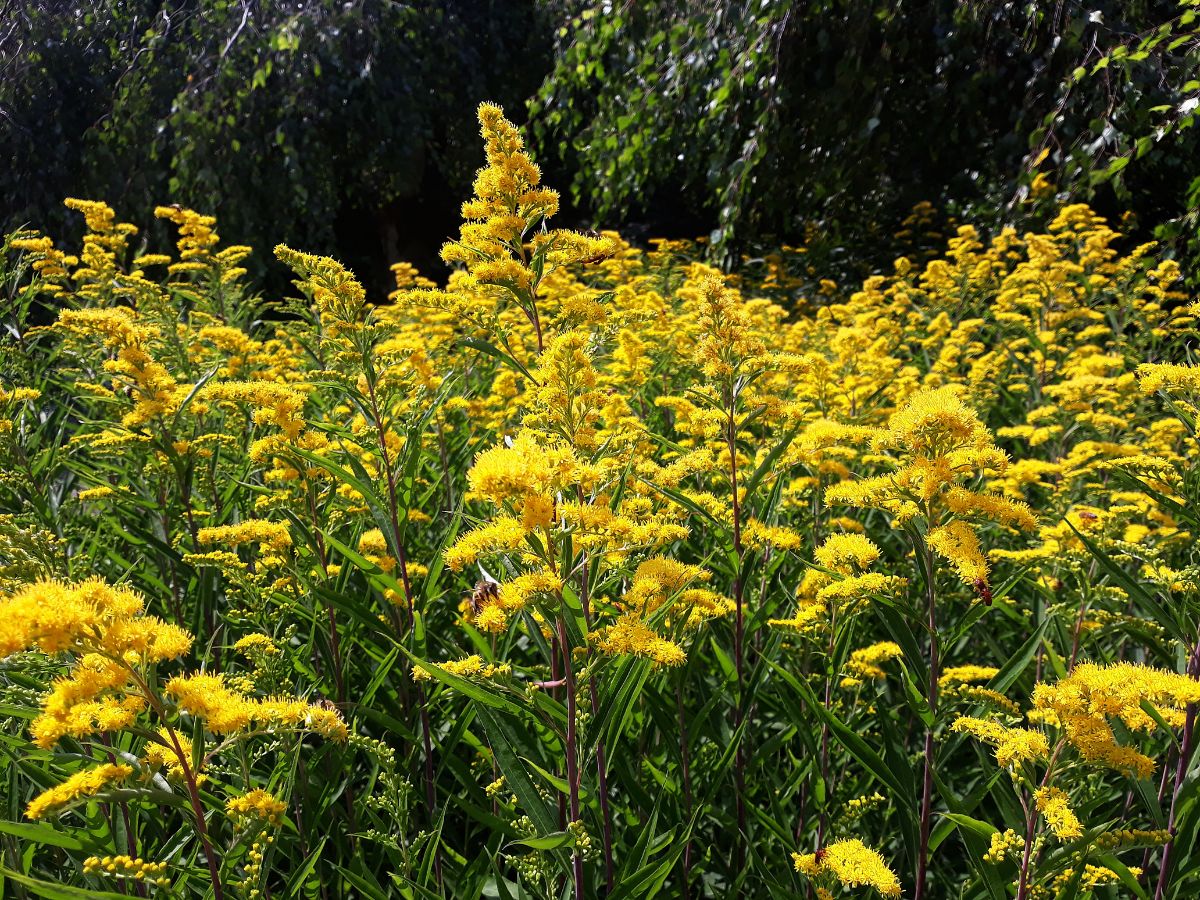
| Plant name: | Goldenrod |
| Lighting: | Full sun |
| Watering requirements: | Low |
| Annual or perennial? | Perennial |
| Bloom time: | Late summer to mid-fall |
Goldenrod is one of the last flowers to bloom in autumn, which makes it ideal for fall crafting. It is also an essential food source for late-foraging pollinators.
Often confused with ragweed (a common allergen), goldenrod rarely produces allergies, so you don’t need to worry. In arrangements, this pretty flower will add a nice pop of yellow color and is a charming filler flower that won’t detract from larger bloomed specimens.
15. Broomcorn (Sorghum bicolor)
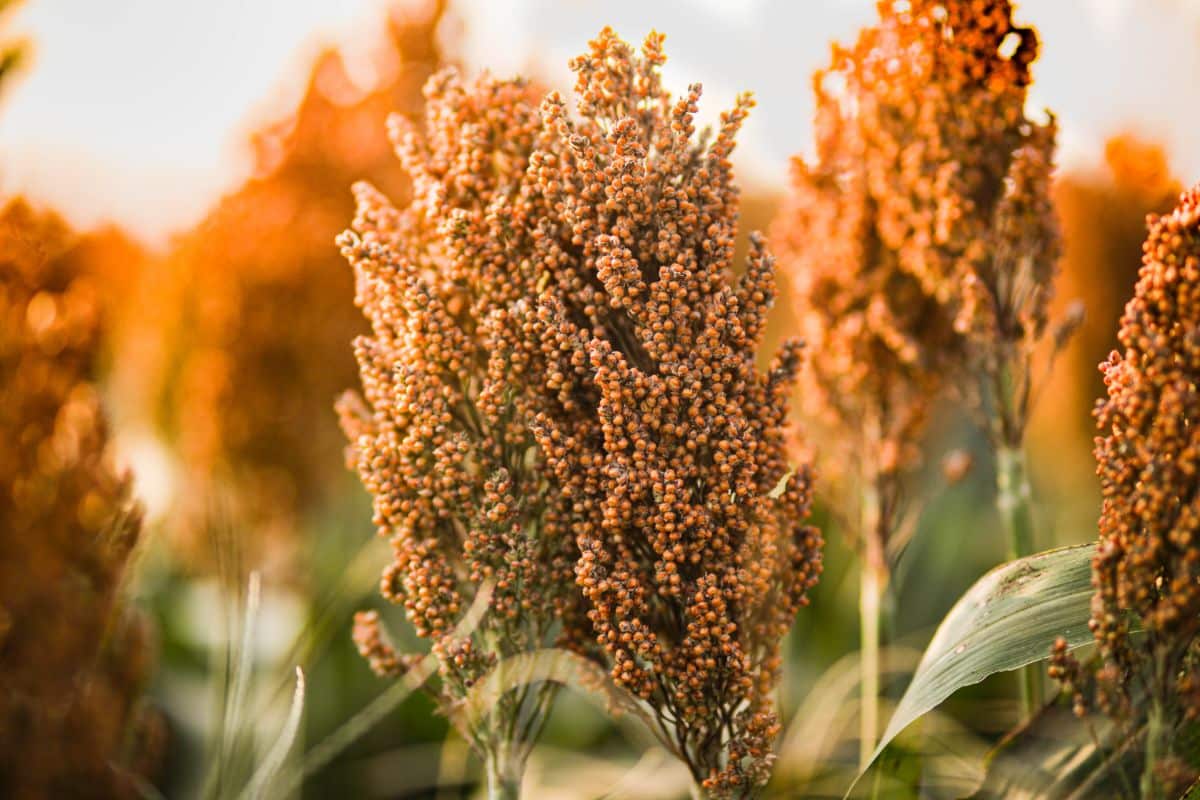
| Plant name: | Broomcorn |
| Lighting: | Full sun |
| Watering requirements: | Moderate |
| Annual or perennial? | Annual |
| Bloom time: | Fall |
While broomcorn isn’t exactly a flower, it is a gorgeous plant nonetheless and dries very prettily.
An heirloom plant that’s related to corn, broomcorn is edible; however, it works better as a dried ornamental. The fibrous seed heads are yellow to a warm, rusty brown and are just right for creating an autumnal centerpiece for the holiday table.
If you’re into wreathmaking, broomcorn is an essential ingredient for your craft too!
16. Craspedia (Craspedia spp.)
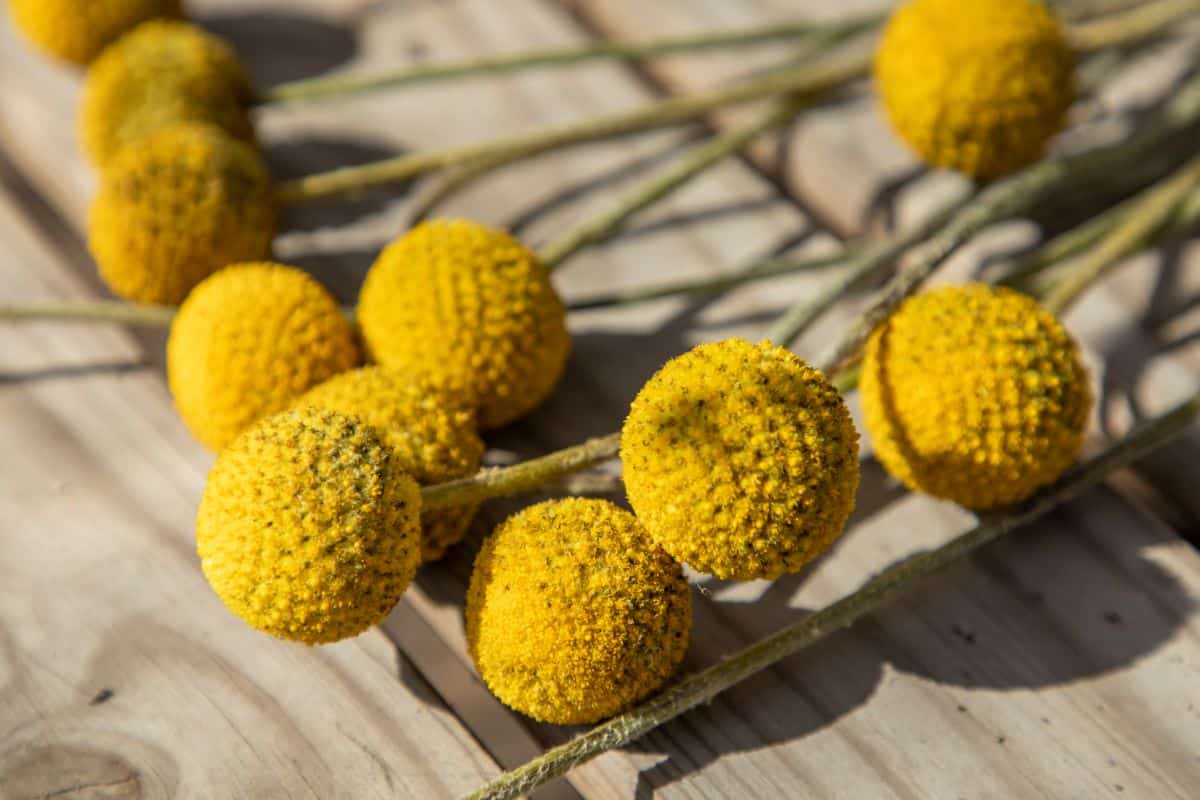
| Plant name: | Craspedia |
| Lighting: | Full sun |
| Watering requirements: | Moderate to low |
| Annual or perennial? | Perennial |
| Bloom time: | Summer |
Another member of the Aster family, Craspedia is a less commonly known plant but it’s a pretty one. Lovely as a fresh flower, when dried Craspedia is just right for preserved bouquets too!
Globular flower heads are yellow in color and retain their vibrancy after being dried. Pair Craspedia with globe thistle for a modern look or add some contrast by interspersing it with blooms with softer lines, like roses and bachelor buttons.
17. Scabiosa (Scabiosa spp.)
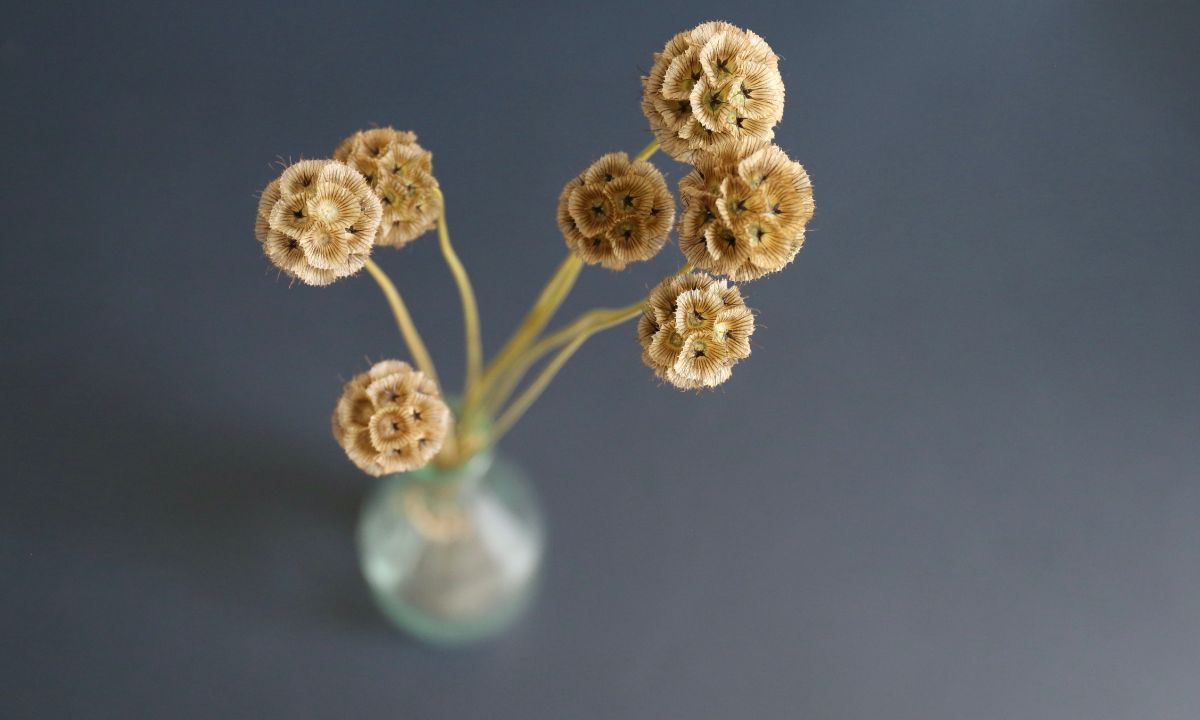
| Plant name: | Scabiosa |
| Lighting: | Full sun to part shade |
| Watering requirements: | Moderate |
| Annual or perennial? | Perennial |
| Bloom time: | Late spring to frost |
When fresh, scabiosa looks somewhat like bachelor buttons and sports fluffy and rounded flowerheads in pinks, purples and white. However, these intriguing plants really come alive when dried.
Also known as the drumstick flower, dried scabiosa pods are papery and rounded with highly contrasting tan and black accents for a geometric look. If you want to add a creative twist to your bouquets, add in scabiosa!
18. Sea holly (Eryngium spp.)
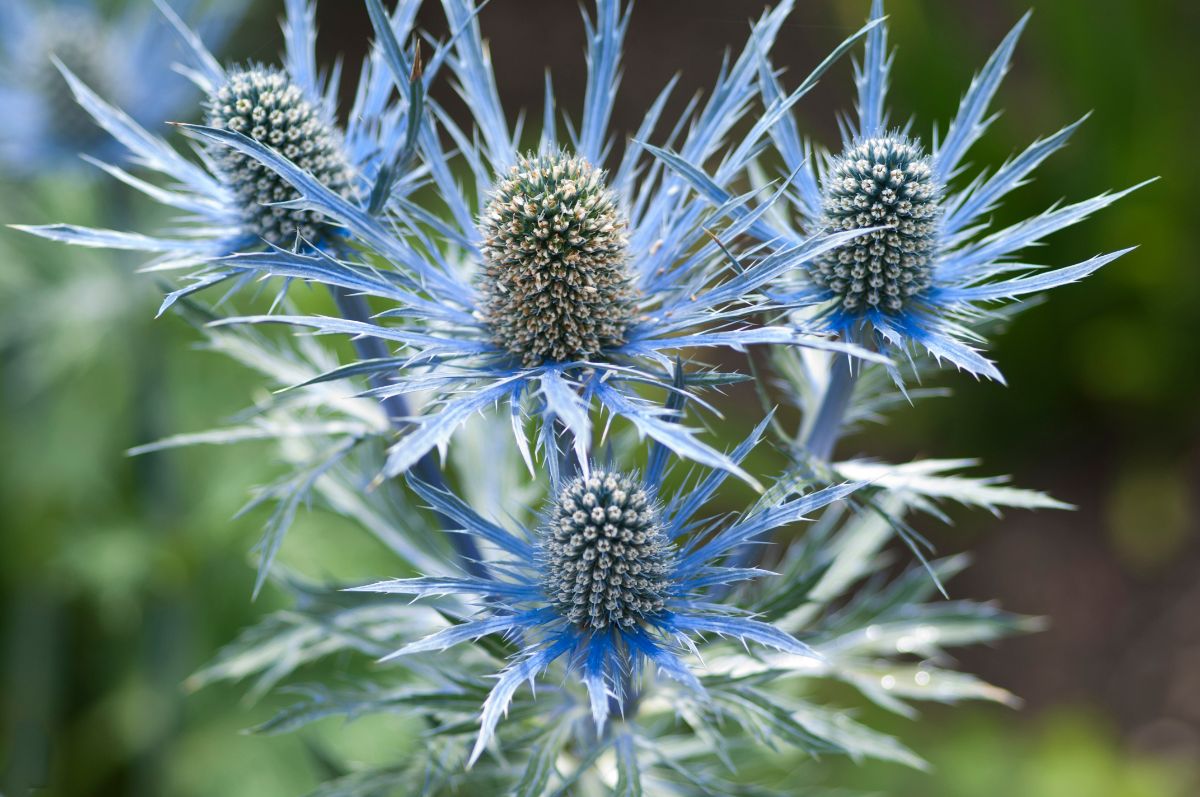
| Plant name: | Sea holly |
| Lighting: | Full sun |
| Watering requirements: | Low |
| Annual or perennial? | Perennial |
| Bloom time: | Mid-summer to fall |
Sea holly looks a bit like globe thistle, with similarly rounded, blue-toned blooms and spiky foliage. However, this plant is a different species and has slightly larger flowers and longer leaves.
An interesting choice for floral arrangements, try pairing sea holly with softer blooms, like baby’s breath, to create lots of contrast. Or, for a more architectural display, switch things up with a bouquet of sea holly and poppy pods.
Frequently asked questions
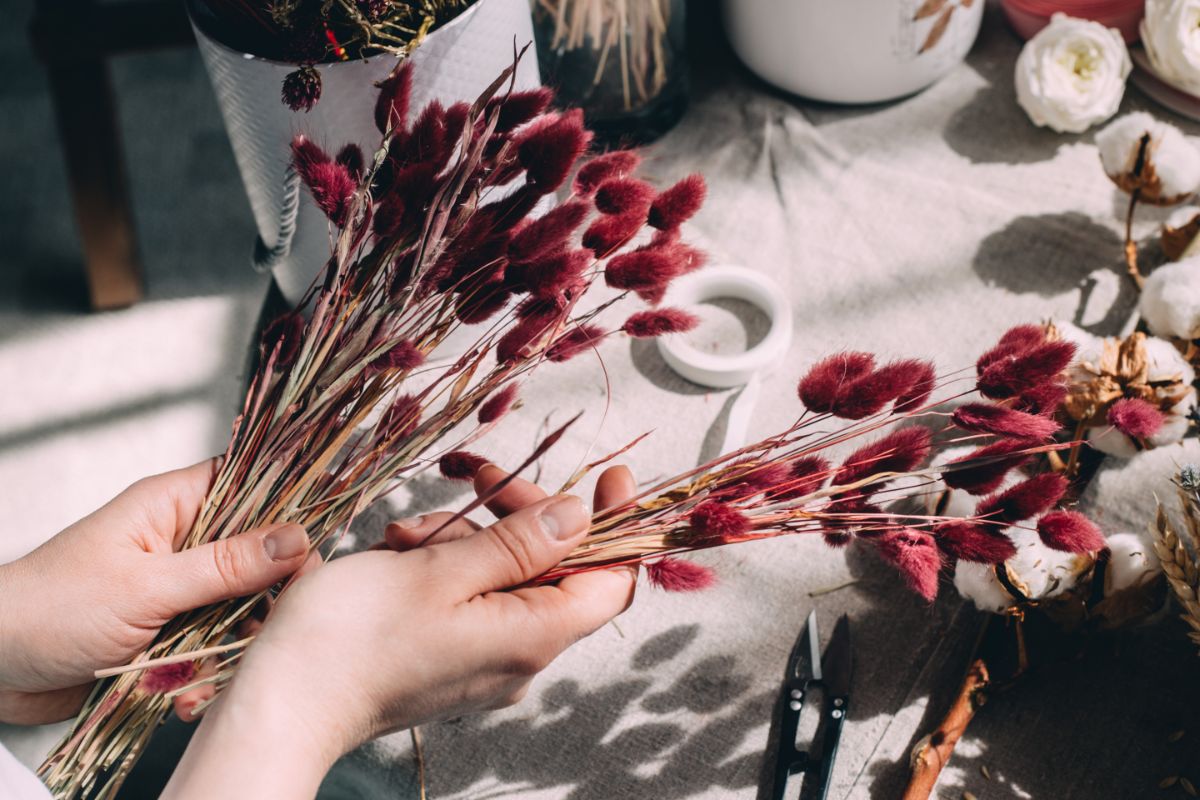
On average, dried flowers last for about a year if you maintain them properly. However, you can extend how long they last by bleaching and dyeing them or using a more involved preservation technique.
Tying flowers into small bouquets with twine and hanging them to dry in a cool, dark location works well for most varieties. You can also dry flowers using a desiccant, like silica gel.
You don’t need to spray anything on dried flowers; however, spraying them with hairspray can help them retain color and hold up to time a bit better.
No, dried flowers don’t need to be sealed. That said, if you’re working with wedding flowers or another very special bouquet that you want to preserve forever, you can consider sealing blooms with resin.
Summary
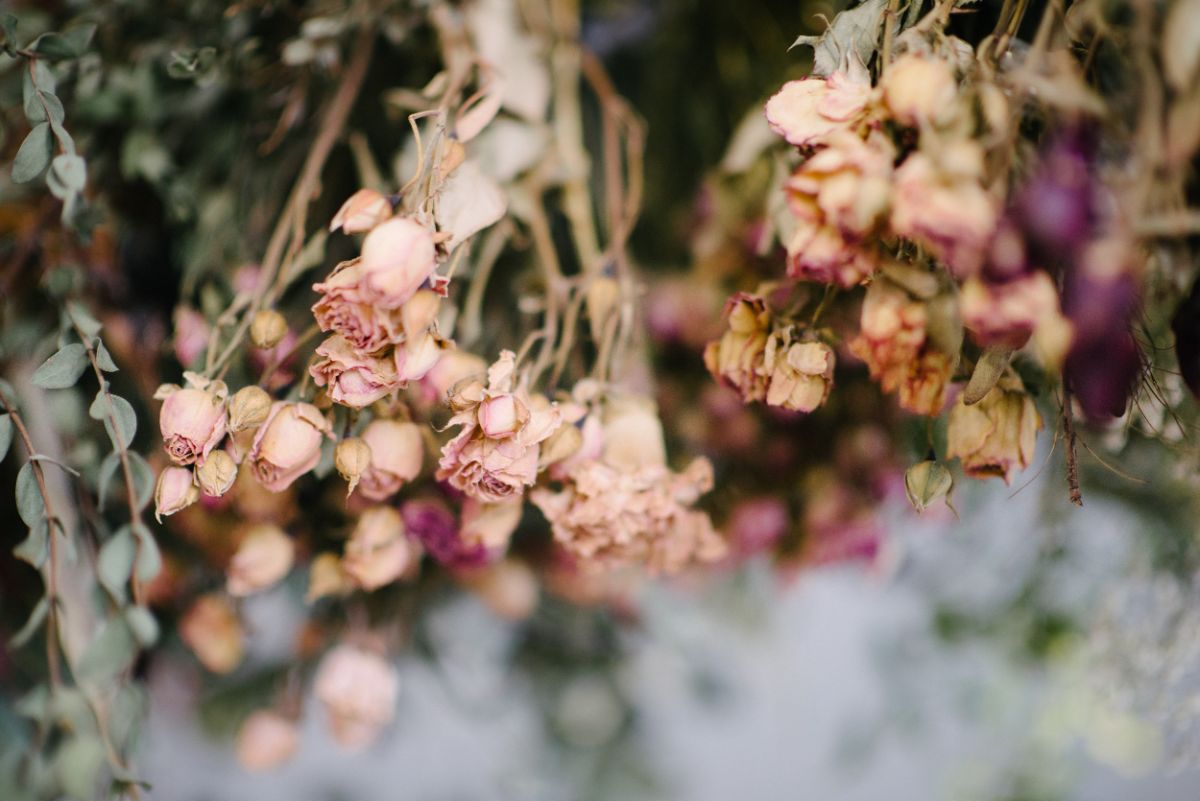
Fresh bouquets are beautiful additions to dining tables and other focal points of your home. But they don’t last very long and are impossible to gather in your garden when winter arrives.
Luckily, there are plenty of flowers that dry beautifully, making them perfect for yearlong preserved displays. We’ve covered some of our favorite blooms in today’s tutorial and hope that you’ve found the perfect plant to try in your own dried arrangements.
If you liked this article, check out our piece on autumn blooms for more colorful flowers to try in your backyard space.

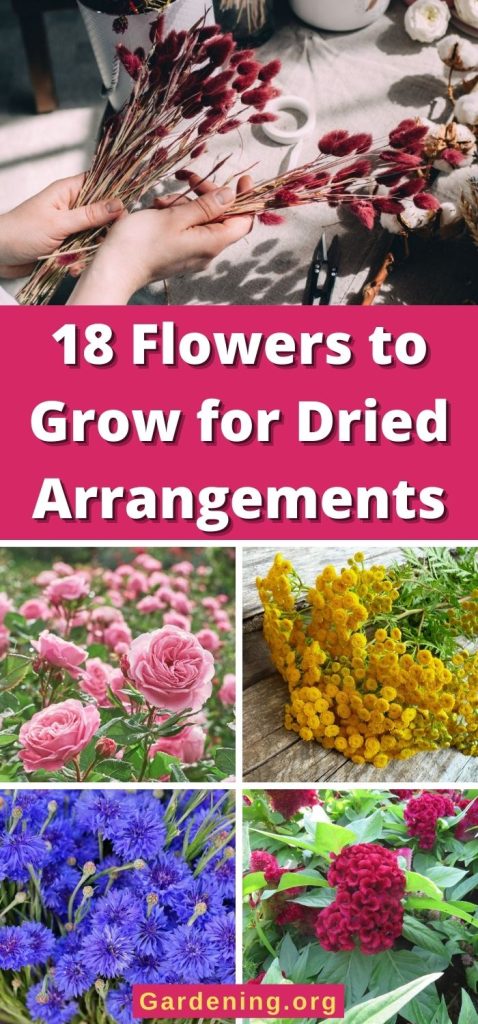
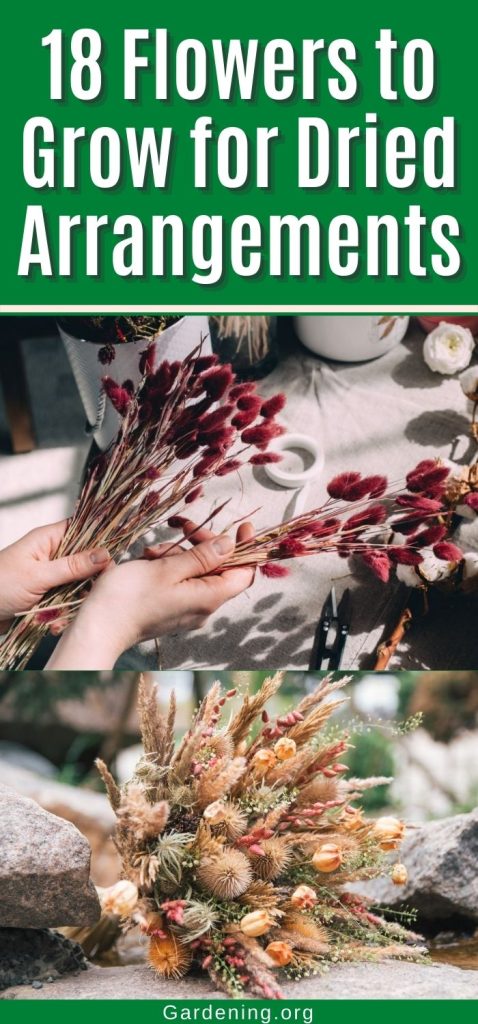

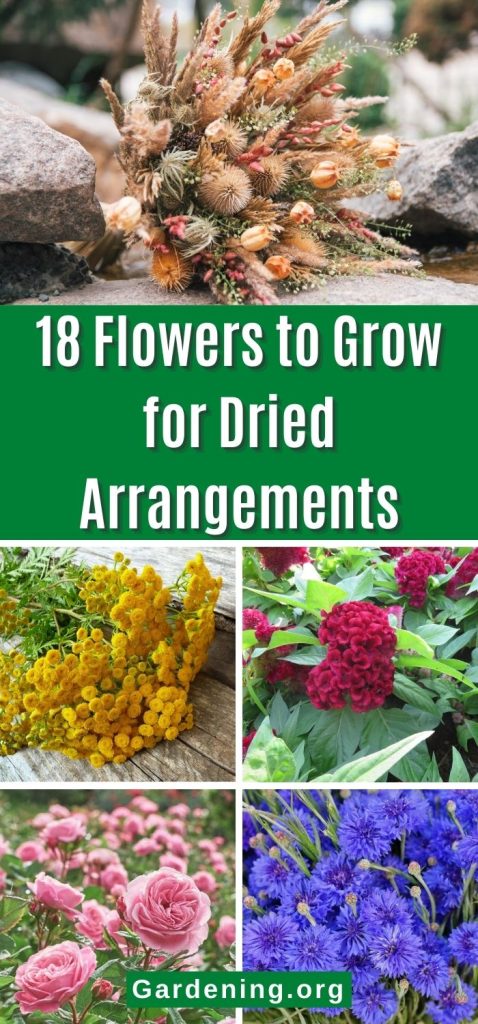

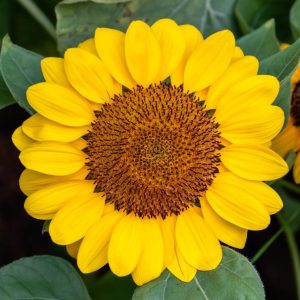
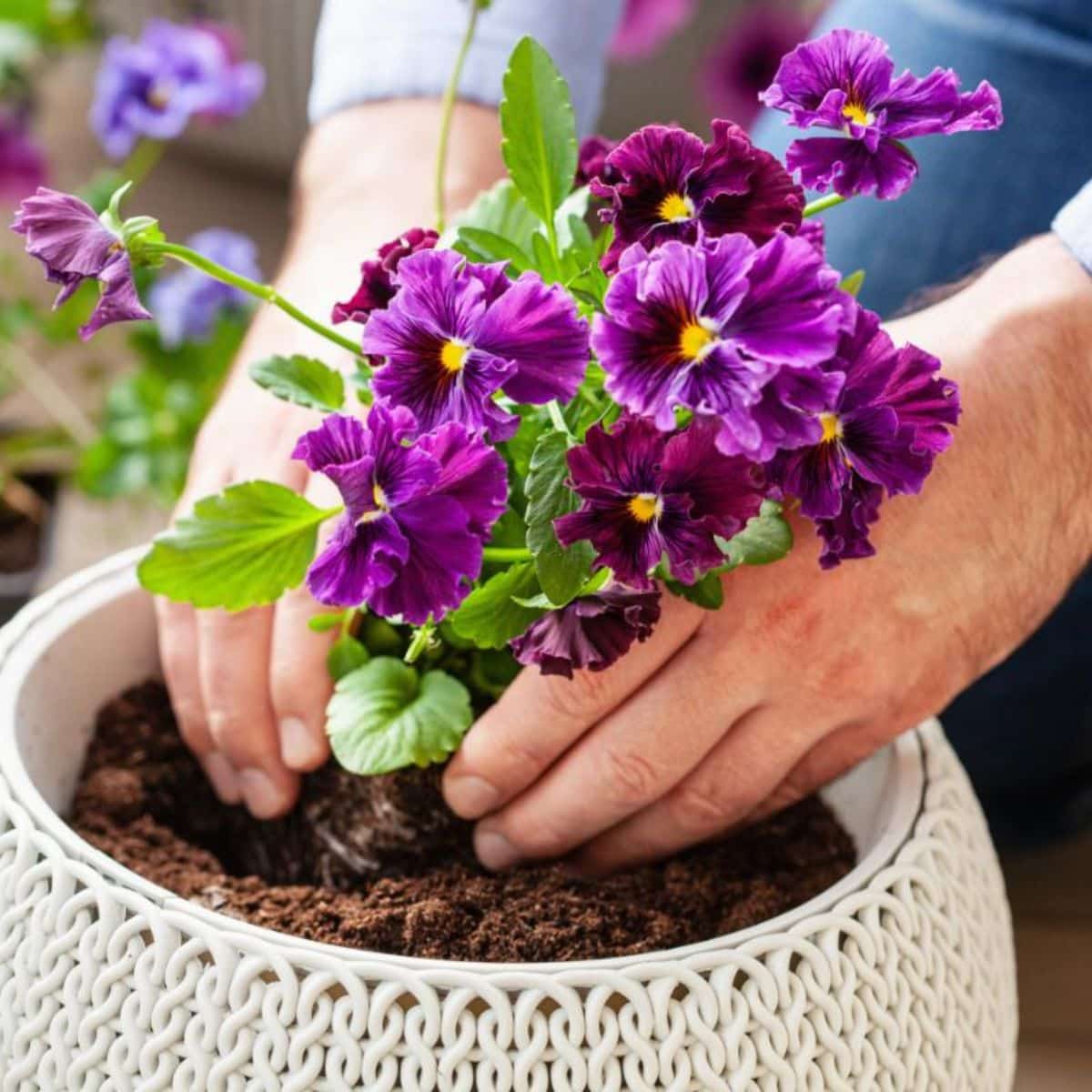
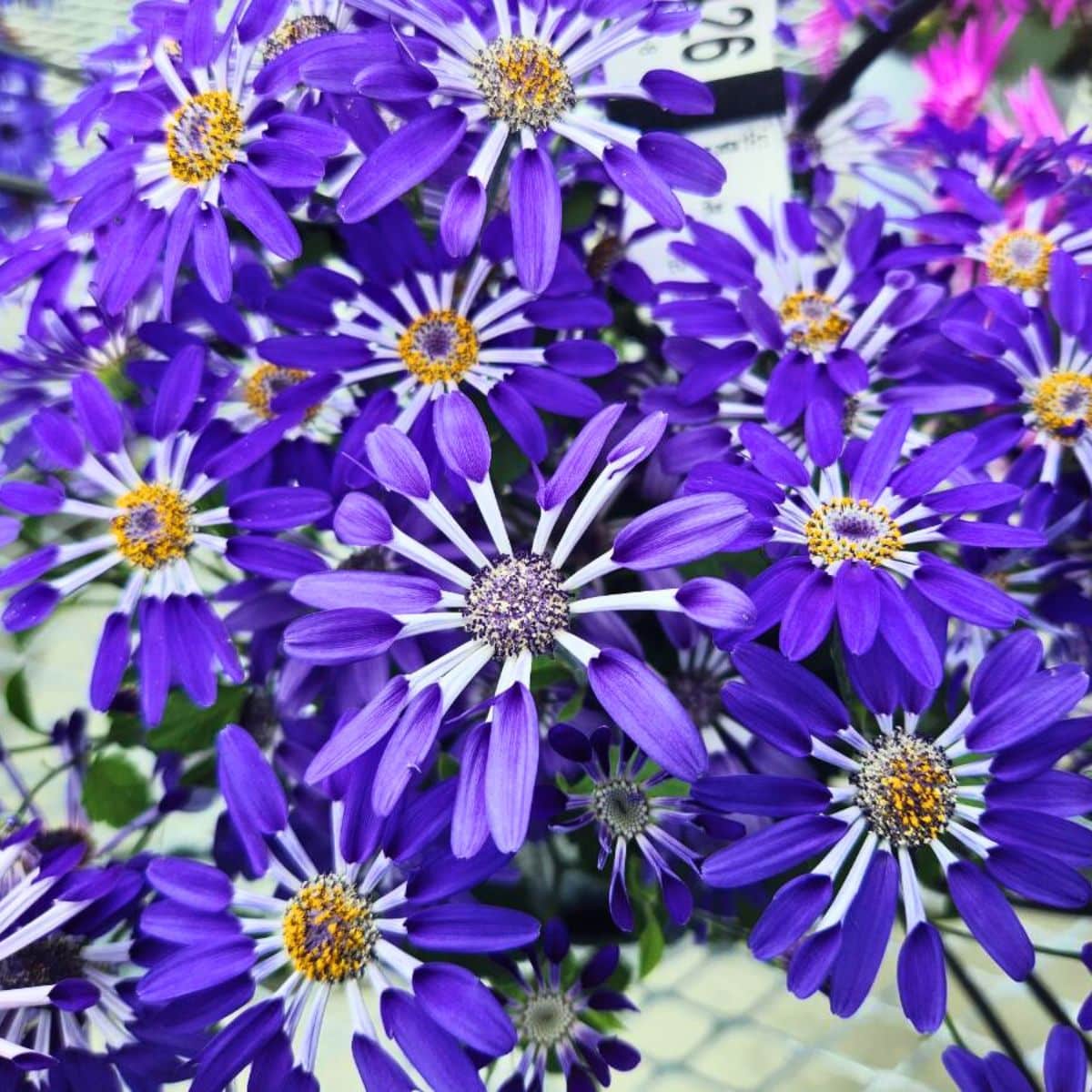
Diana kapulak
Awesome site Thanks